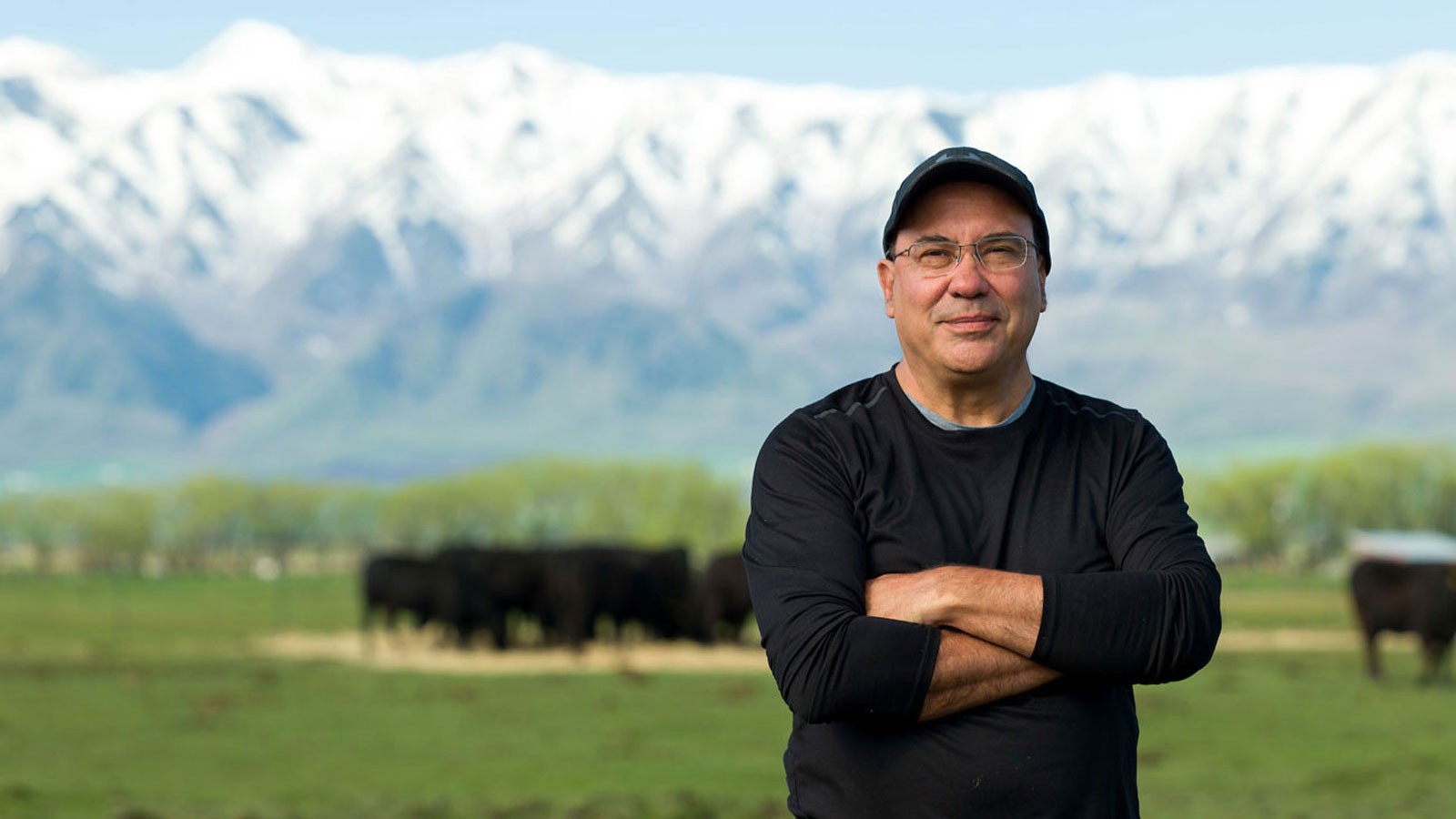Utah State Magazine Excerpt: Real Beef. Done Well. An Eco-Friendlier Meal Using 'Smart Foodscapes'
By Lael Gilbert |
Juan Villalba, professor of wildland studies at USU, studies what cattle eat and why. He believes it may be possible to build a more sustainable plate using smart foodscapes, which could improve cattle health and reduce greenhouse gas emissions. (Photo credit USU/Levi Sim)
This is an excerpt from Utah State Magazine's Summer 2022 edition, out now, with the theme "Persistence." is available on the magazine's website, utahstatemagazine.usu.edu.
There’s something utterly bewitching about the sound of steak dropping onto a hot, oiled skillet.
Or maybe it’s the umami scent of a bacon-topped burger sizzling on the grill, wrapped in smoke and flame. Or perhaps your preference is a perfectly peppered piece of beef jerky — one with a nice carnivorous bite to it. Beef is an American way of life — nine out of ten Americans regularly consume the stuff, eating, on average, more than 83 pounds per year. Although we often choose not to think about it, all those garlic-smothered shish-kabobs, slow-cooked Sunday roasts, and spicy bowls of chili con carne come from somewhere — cattle.
We also tend to overlook the fact that the production of beef has a real impact on the environment. Despite a growing recognition of the toll that the agricultural beef production has on natural water systems, plant ecology, air pollution, soils, animal quality-of-life, greenhouse gas emissions and more, it isn’t a habit we are readily willing to quit. In 2020 U.S. farmers and ranchers produced 27.6 billion pounds of commercial beef, and imported another 3.3 billion.
Here’s another fact with serious ethical sizzle: 15% of global greenhouse gasses are related to global agricultural production. You heard that right … a super-sized cut of global climate change is sitting smothered in au jus and horseradish on your dinner plate.
We’ll be honest … it’s on Juan Villalba’s plate too. He’s a professor of wildland resources in the Quinney College of Natural Resources and an expert in herbivore food selection (i.e. what open range cattle eat, and why). He and a team of experts in plant ecology, range management, agricultural production, economics, outreach, and education, have been set with a tough task — developing an eco-friendlier way to create a burger. The issue they face is cow burps.
WRITER
Lael Gilbert
Public Relations Specialist
Quinney College of Natural Resources
435-797-8455
lael.gilbert@usu.edu
CONTACT
Juan Villalba
Professor
Department of Wildland Resources
juan.villalba@usu.edu
TOPICS
Agriculture 225stories Food 168stories Sustainability 145storiesComments and questions regarding this article may be directed to the contact person listed on this page.







